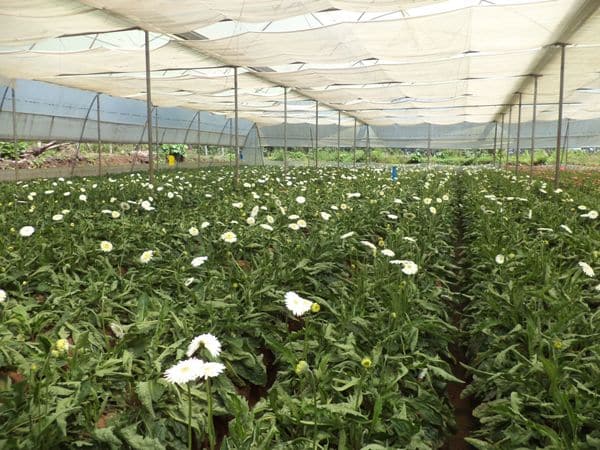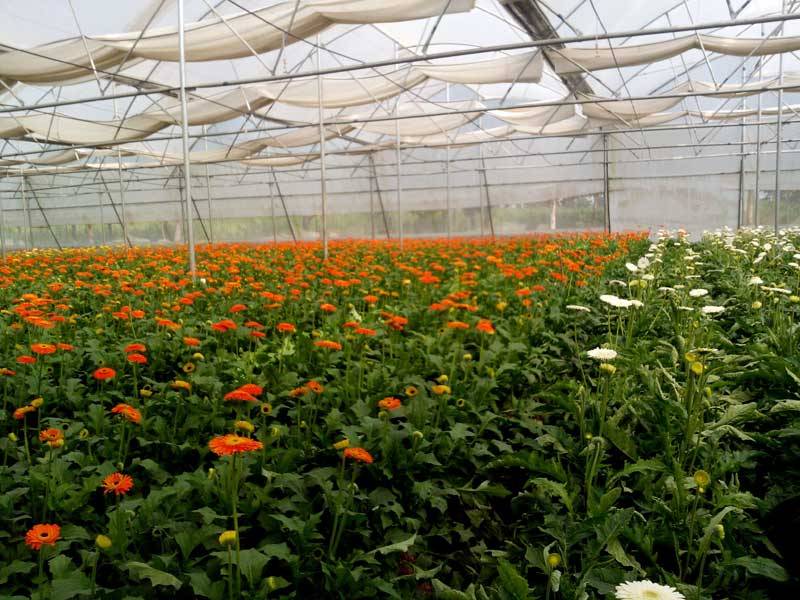Gerbera Cultivation
Gerbera Cultivation process
Gerbera is important commercial cut flower crop, and Gerbera flowers have a wide range of colors including yellow, orange, cream-white, pink, brick red, red color, terracotta and various other intermediate colors. Sometimes in double varieties, bicolor flowers are beautiful; Gerbera flower stalks are long, thin and leafy.
In Greenhouse Gerbera cultivated in Soil or Soilless media ( coco peat). both have own advantage & limitation.
- Gerbera cultivation cost increase in soilless media is around 20-30%.
- Production is higher in soilless media compare to soil media.
- Required very close monitoring.
- Soilless media is suitable for the large area more than 2 Acre.
- In India mostly soil media preferred for gerbera cultivation due to electricity & irrigated water quality.
The major Gerbera producing states in India are Maharashtra, Karnataka, Gujarat, Tamilnadu, West Bengal and Himachal Pradesh.
1) Soil Structure Required for Gerbera Cultivation
There are two primary factors are considered while selecting soil –
- The soil pH must be between 5.5 to 6.5.
- The soil salinity level does not exceed 1 ms/cm; For better root growth and better penetration of roots, the soil should be highly porous and well drained.
Red lateritic soil ideal soil for Gerbera cultivation.
Therefore, as soon as you decide gerbera cultivation project site, you should analyze soil as early as.
Soil sterilization
Soil sterilization is required before gerbera plantation. Fungus Phytophthora is very dangerous for Gerbera crop.
There are three main soil sterilization methods available,
- Steam: Not practical for Indian conditions.
- Sun: in this method plastic sheet isCover on the soil for 6-8 weeks. The sunrise will heat the soil, and this will kill the most fungus.
- Chemical: this is most advance & useful method. Hydrogen peroxide (H2O2) with silver is used for sterilization of soil.
Request Quote
Progressive banana varieties
In local languages, this banana is known as Bhusavali, Basrai, Marisas, Kabuli, Sindurani etc.
It is very popular in India.
Its plant is small, while the fruits are large.
Its pulp appears soft and sweet in food.
This variety is also known as Bambegreen and Harichal.
The areas of the Western Deep Group are famous mainly for its cultivation.
The banana plants can be 3 to 4 meters in height.
While their stem is medium thick and thick green.
Green fruits develop in them.
On an average, each bunch weighs between 25 and 30.
Fruits are yellow.
Customer Feedback
Talented Agronomist
Team Alexa made my Poly-House very well & also helped by assisting in organic Framing. Thanks & All the Best for the future.
Ms. Poonam Saxena, Indore (M.P.)
landownerExcellent job, excellent workmanship
Currently, Team Alexa helping me on Orchid Cultivation in Poly house. I’ve have to say till now everything is good and expecting the same for future.
Mr. Rajendra singh , Indore (M.P.)
landownerGreat ! Work
I would suggest Alexa Farms for Poly house Farming , Hi Tech Farming Organic Farming because there professionals have knowledge for all the crops.
Mahant Dharmendra Puri, Indore
landownerDone Wonderful job
Amazing design and installation of our new, beautiful yard. Gardener is professional, creative and knowledgeable designer.
Mark Angelino
NewyorkPlanting & Removal Charges
Within a your budget you can freshen up your plant with a few key upgrades that will increase your home’s curb appeal. A new gravel driveway or concrete walkway can make your home look like new. Small budgets are good for breaking up a larger project into manageable chunks, so you might splurge for a nice walkway this year and deal with the driveway later.



